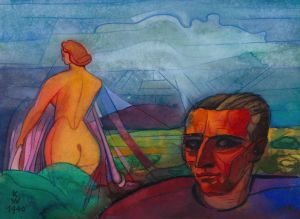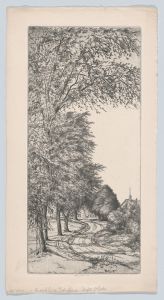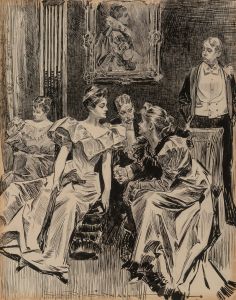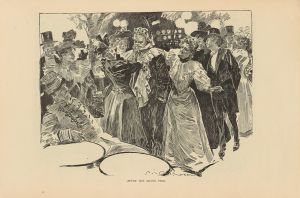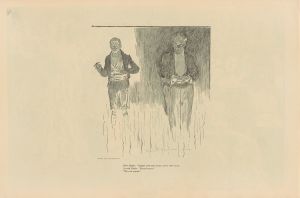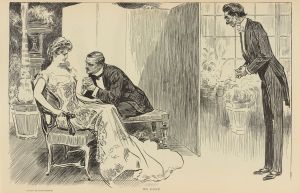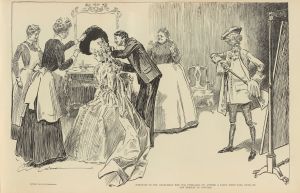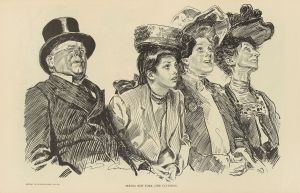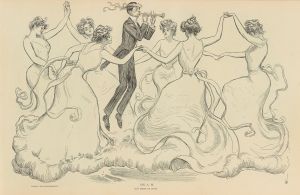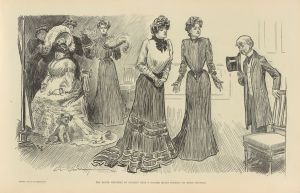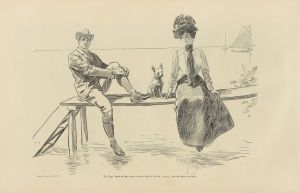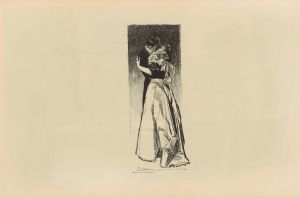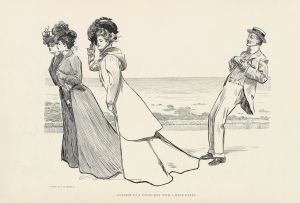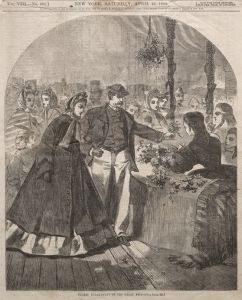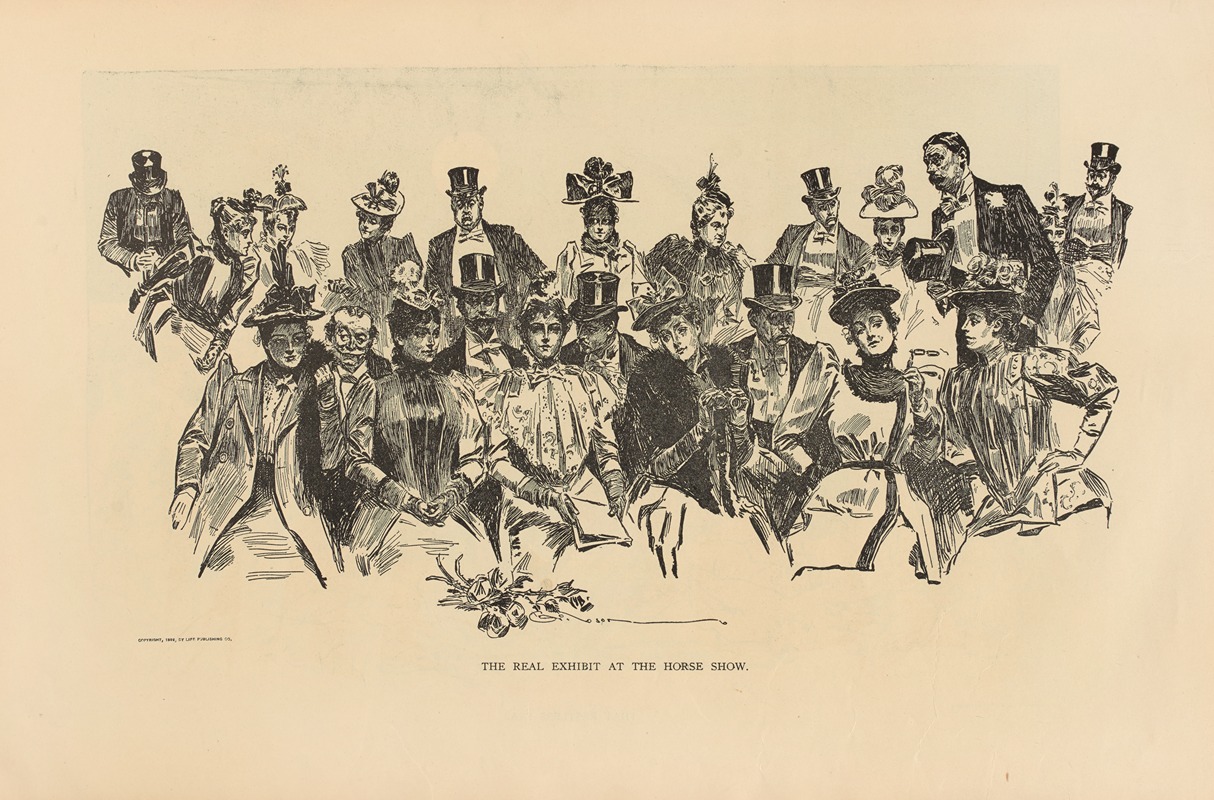
The real exhibit at the horse show
A hand-painted replica of Charles Dana Gibson’s masterpiece The real exhibit at the horse show, meticulously crafted by professional artists to capture the true essence of the original. Each piece is created with museum-quality canvas and rare mineral pigments, carefully painted by experienced artists with delicate brushstrokes and rich, layered colors to perfectly recreate the texture of the original artwork. Unlike machine-printed reproductions, this hand-painted version brings the painting to life, infused with the artist’s emotions and skill in every stroke. Whether for personal collection or home decoration, it instantly elevates the artistic atmosphere of any space.
Charles Dana Gibson was an influential American illustrator best known for his creation of the "Gibson Girl," an iconic representation of the American woman at the turn of the 20th century. His work was widely published in magazines such as Life, Harper's Weekly, and Scribner's, and he became one of the most celebrated illustrators of his time. Among his many works, "The Real Exhibit at the Horse Show" stands out as a notable piece that reflects his keen observation of social settings and his ability to capture the nuances of human interaction.
"The Real Exhibit at the Horse Show" is a black-and-white illustration that was published in the early 20th century. The artwork depicts a scene at a horse show, a popular social event during that era, particularly among the upper classes. Horse shows were not only about the display of equestrian skills but also served as important social gatherings where people could see and be seen. Gibson's illustration captures this dual nature of the event.
In the illustration, the focus is not on the horses or the competition itself but rather on the spectators, particularly the elegantly dressed women who are the real "exhibit" at the show. This reflects Gibson's commentary on the social dynamics of the time, where the appearance and behavior of the attendees were often as significant as the event itself. The women in the illustration are depicted with the characteristic poise and fashion of the "Gibson Girl," embodying the idealized beauty and sophistication of the era.
Gibson's work often contained subtle social critiques, and "The Real Exhibit at the Horse Show" is no exception. By shifting the focus from the horses to the spectators, Gibson highlights the performative aspect of social gatherings, where individuals are both observers and participants in a social spectacle. This theme resonates with the broader cultural context of the time, where social status and public appearance were of paramount importance.
The illustration is executed with Gibson's trademark style, characterized by precise line work and attention to detail. His ability to convey expression and character through minimal lines is evident in the way he captures the demeanor and attire of the figures in the scene. The composition of the illustration directs the viewer's attention to the interactions and postures of the people, effectively conveying the social atmosphere of the event.
"The Real Exhibit at the Horse Show" is a testament to Charles Dana Gibson's skill as an illustrator and his insightful commentary on the social customs of his time. Through this work, Gibson not only entertains but also invites viewers to reflect on the nature of social gatherings and the roles individuals play within them. His illustrations remain a valuable resource for understanding the cultural and social history of the early 20th century, offering a window into the values and aesthetics of the period.





